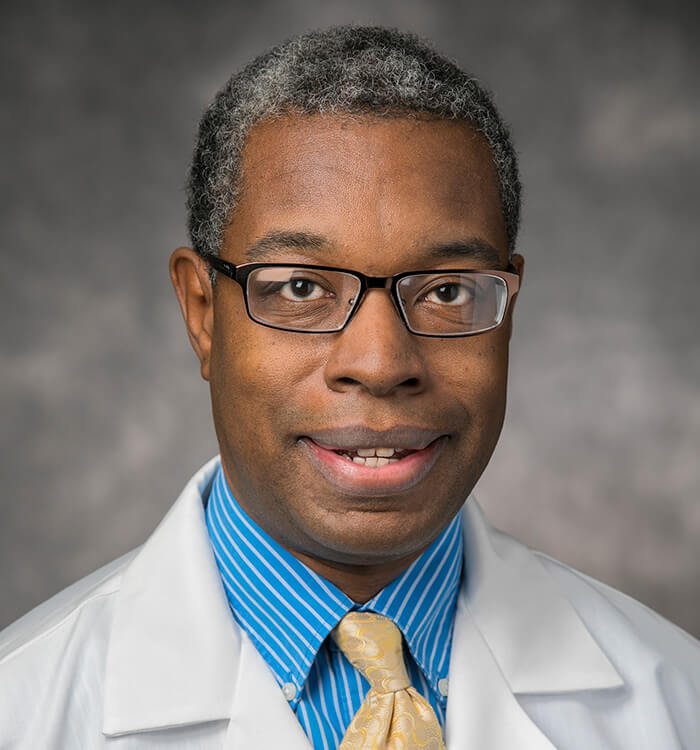Nationally Recognized Neurologist Returns to University Hospitals
July 11, 2023
UH Clinical Update | July 2023
When Robert Richardson, MD, arrived in Cleveland for medical school at Case Western Reserve University in 1990, he had a singular goal in mind -- to become a neurologist. It was a dream dating back to his high school days.
 Robert Richardson, MD
Robert Richardson, MD“Back in the early 80s, I saw a NOVA special on PBS about the brain,” he recalls. “That really set off my interest in neuroscience. It was in the tenth grade, and I already knew I wanted to be a doctor, but once I saw this, I knew I was going to be in neuroscience of some kind.”
A goal achieved: Hard work brought the dream to fruition. Dr. Richardson earned his medical degree from the School of Medicine in 1994, completed his neurology residency training at UH in 1998 and his neurophysiology fellowship training at UH in 1999. It was a long road, but Dr. Richardson is quick to credit the supportive colleagues he encountered from the beginning of his training, both at UH and CWRU, as being essential to his success.
“Once I arrived at Case and made it known that I was interested in neuroscience, the Department of Neurology at UH and the CWRU Department of Neuroscience took me under their wing right away and guided me through the process,” he says. “I'm very thankful for the support I still get from the Department of Neurology at University Hospitals.”
Return to UH: After 19 years in private practice as a neurologist and board-certified electromyographer in Cleveland, Dr. Richardson returned to his roots at UH five years ago. He sees general neurology patients on an outpatient basis at UH Bedford, performs electromyography there, and provides hospital coverage at UH Ahuja Medical Center.
Dr. Richardson says he can’t imagine anything other than being a general neurologist.
“I see a little of everything,” he says. “It's really popular to sub-specialize within neurology nowadays. But when I finished residency, I wanted to practice in such a way that I could be intellectually stimulated, and the best way for me to be intellectually stimulated is to see a variety of things. I see everything from headache to sleep medicine and that keeps me on my toes. I have to always be reading so I can get patients accurate information.”
But Dr. Richardson says what most drew him back to UH was the opportunity to do more teaching, especially of medical students just beginning their clinical education.
“Teaching started out for me as solving a problem,” he says. “Instead of complaining about what a student or a resident knows or doesn't know, my approach became simply to teach them. What I'm doing now at UH has taken me back to the medical school level, where I can have that influence on students even before residency.”
National acclaim: In recognition of his long career in teaching and patient care, Dr. Richardson was recently named by Castle Connolly and its Diversity Equity and Inclusion Initiative as one of the country’s Top Black Doctors for 2023. The honor includes just 114 doctors across 20 states and 45 specialties. To compile this list, Castle Connolly accepted nominations from physicians’ peers and then assessed each physician based on criteria such as qualifications, education, leadership appointments, outcomes data and more.
Dr. Richardson is characteristically humble about this national-level recognition.
“I'm just here doing my job,” he says. “That's all I can say.”
However, Dr. Richardson says this designation does help shine a light on how much work is still needed to remedy the problem of a physician workforce that doesn’t look like America. He guesses there are fewer than 350 Black neurologists in the United States.
“It was a problem when I entered medical school in 1990, and it continues to be a problem, with multiple facets,” he says. “The fact is the pipeline is just empty. There are a lot of things that have to be done, from basic science education in places where there are a lot of Black kids to supporting Black students in college who are interested in medical school.”
He points to last fall’s Black Men in a White Coat mentoring event for grade school, middle school, high school and college students, co-sponsored by UH and CWRU, and UH’s Health Scholars program as encouraging moves in the right direction.
“There's a lot of thought around seeing people who look like you in these positions,” he says. “You can see what you aspire to and envision yourself there.”
Patient first: As he continues his transition back to UH, Dr. Richardson says one thing will not change – his promise to his patients to take the time needed to explain procedures and conditions in the simplest terms possible – and truly listen to their concerns.
“I do the best I can to break down into plain English what is happening with them,” he says. “Most people aren't doctors, and no amount of Googling will make you one. Very frequently, it helps to just make it simple for a patient to understand. They might not stop you when you speak, so that putting it in plain English is so important.”
“I also spend a lot of time actively listening, sometimes repeating back what the patient says to me, just to make sure they know that they’ve been understood,” he adds. “While this is essential with any group of patients, Black patients in particular come to the medical system with a lot of distrust. Even if it takes a little longer, it's really simple to actively listen. You give people the time they need.”
Congratulations to Dr. Richardson on being named on the Top Black Doctors in America for 2023.


